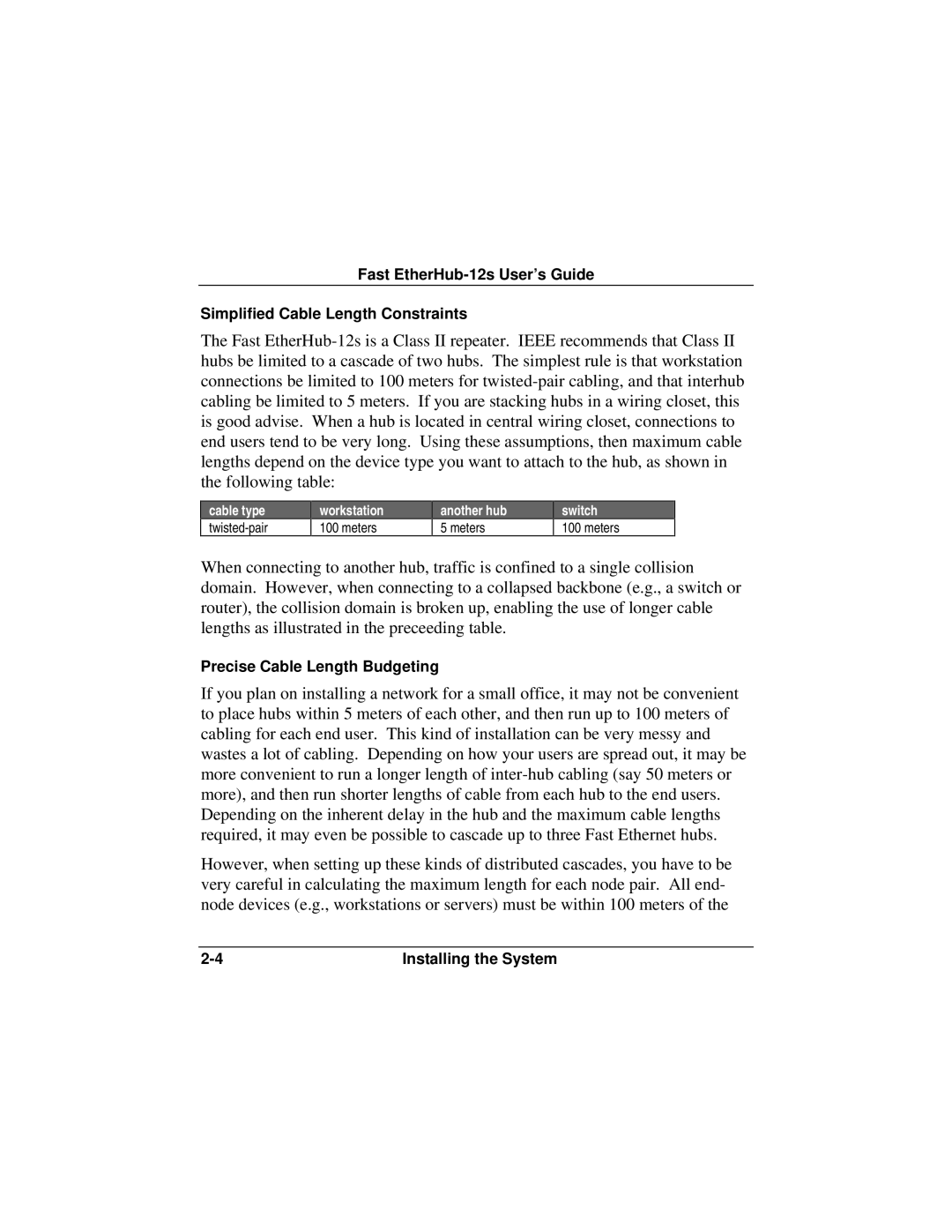
Fast
Simplified Cable Length Constraints
The Fast
cable type
workstation
100 meters
another hub
5 meters
switch
100 meters
When connecting to another hub, traffic is confined to a single collision domain. However, when connecting to a collapsed backbone (e.g., a switch or router), the collision domain is broken up, enabling the use of longer cable lengths as illustrated in the preceeding table.
Precise Cable Length Budgeting
If you plan on installing a network for a small office, it may not be convenient to place hubs within 5 meters of each other, and then run up to 100 meters of cabling for each end user. This kind of installation can be very messy and wastes a lot of cabling. Depending on how your users are spread out, it may be more convenient to run a longer length of
However, when setting up these kinds of distributed cascades, you have to be very careful in calculating the maximum length for each node pair. All end- node devices (e.g., workstations or servers) must be within 100 meters of the
Installing the System |
